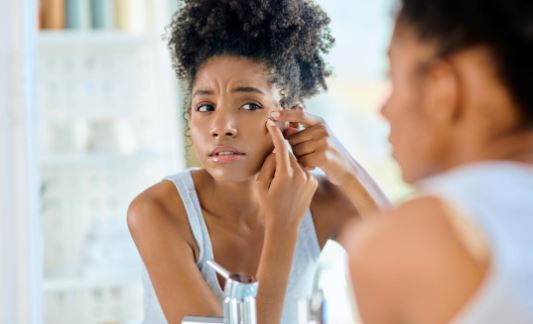Lifestyle
Here’s everything you need to know about skin purging

Did you just start using a new product that promised to make your skin glow, but has made it worse instead? Now you have angry skin and in the process, burnt hole in your pocket. What a bummer!
It’s common to have a reaction to a new product, but the key is to figure out whether your skin is actually breaking out or just purging.
If it is the latter, well, you can thank the skin Gods because skin purging though looks horrific, is actually good for you. It’s a sign that your skincare product is working.
What is skin purging?
Skin Purging is the reaction to an active ingredient in your skincare product. It speeds up the skin cell turnover rate leading to increased cell formation. This also means that you’ll be shedding dead skin cells faster than normal. During this process, the pre-existing clogged pores beneath the surface of your skin (microcomedones) are pushed out, causing your skin to flare up.
All your soon-to-be pimples get activated together, faster than they normally would on their own. In other words, purging gets all the nasty stuff out of your skin all at once, leaving only the goodness behind. Think of it as a deep cleanse. Skin purging can go on for four to six, but once the worst is over, you’re going to be left with clear, youthful and glowing skin. If your purging lasts longer than that, consult your dermatologist immediately.
Which ingredients cause skin purging?
It is usually triggered by active ingredients that are used to treat the acne. It gets worse before it gets better. Some of these ingredients are retinoids, vitamin C, AHAs and BHAs (glycolic, malic, lactic, and salicylic acid).
What does skin purging look like?
Skin purging typically looks like tiny red bumps on the skin that are painful to touch. They are often accompanied by whiteheads or blackheads. It can also cause your skin to become flaky. The flare ups caused by purging have a shorter lifespan than a breakout. It should heal much quicker. These bumps also tend to appear on areas of your face where you frequently breakout. So, if you’re seeing irritation on new areas, that’s probably not purging. That being said, everyone’s skin is unique and purging may show up in various different forms. Take an appointment with your dermatologist to understand your skin condition better.
What should you not do when your skin is purging?
You may be tempted to stop using the product that caused your skin to purge in the first place, but refrain. The same ingredient that’s causing your skin to flare up with pimples is the one that’s actually treating your skin problems. Let it run its course. Another thing you shouldn’t do is pick at or scratch your skin. The acne caused by purging is temporary but by picking at it, you might just make the scars permanent.






